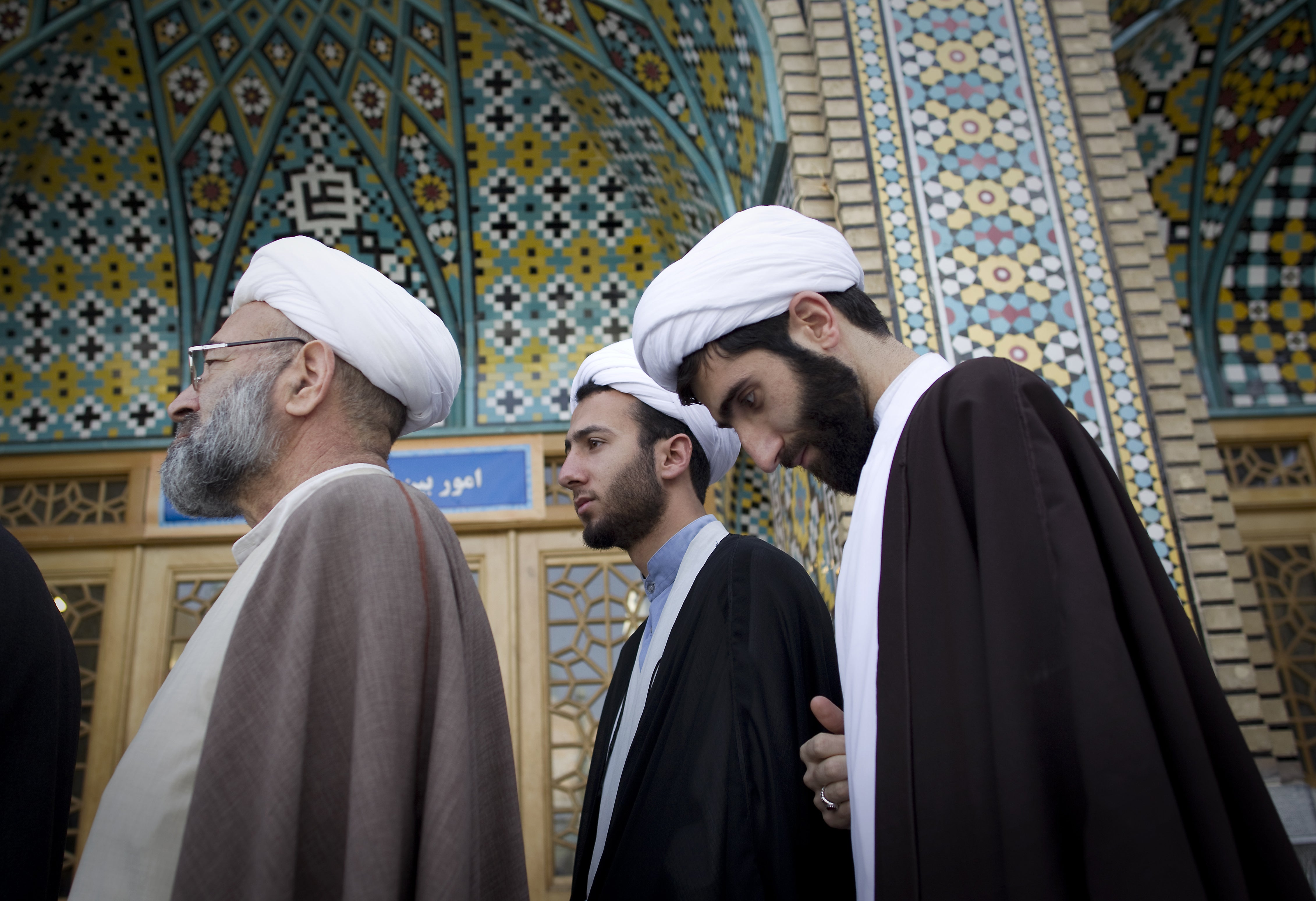Growing Iran’s uprising means appealing to those still sitting on the fence
Many Iranians remain religious – or at least culturally and socially conservative – even if they are disgusted by the abuses, corruption and profound incompetence of the regime, writes Borzou Daragahi


The young men and women almost tip-toe up to the clerics, sometimes from behind, and sometimes sidling up beside them. Then, in a gesture that combines irreverence, contempt and perhaps a strong dash of juvenility, they knock the mullah’s turban off his head.
The Iranian internet is full of such video clips, showing young people getting their own bit of revenge against the clerics who have lorded over them for decades. You can’t blame the kids, or even the millions of Iranians in the country and in the diaspora cheering them on.
Iran’s clergy generally deserve the humiliation. Supreme leader Ali Khamenei, his clerical adjutants in the various branches of government and their craven hangers-on have been bullying Iranians for nearly 44 years. They have regularly abused citizens like 22-year-old Mahsa Amini, whose death while in the custody of morality police triggered the ongoing seven-week uprising. The clerics have pilfered the country’s wealth for their own ends. They have turned Iran into a pariah that is mistrusted by its neighbours and avoided by all but other rogue states.
But the act of targeting someone wearing clerical garb and walking down the street minding their own business is not a good look for the opposition, and it should be discouraged. Iran’s opposition for now is waging a revolution, not an all-out war, and its main aim should be to help grow a popular uprising to the point where it can overwhelm the regime.
Opposition activists and militants have not just targeted the clergy with relatively harmless pranks. They are also firebombing seminaries and Khamenei’s branch offices in the dead of night. In one instance, late last week, a cleric in the country’s southeast was shot dead in his car.
“There is no difference between wearing clerical garb now in Iran and wearing the Nazi uniform during World War II in Germany,” said one activist on the discussion app Clubhouse.
There are good reasons to strike such targets. Over his 33 years as supreme leader, Khamenei has turned the clerical establishment into an appendage of the regime, pouring public resources into the coffers of religious foundations and seminaries run by his corrupt emissaries. These institutions indoctrinate the fanatical Basiji militiamen who terrorise ordinary people. They play a role in training Iraqi, Lebanese and other foreign fighters used to do the regime’s bidding abroad.
But many Iranians remain religious – or at least culturally and socially conservative – even if they are disgusted by the grave abuses, core corruption and profound incompetence of the regime. They are among the fence-sitters who are sitting the uprising out, and keeping the numbers attending scattered protests at a level that security forces can handle with calibrated violence.
Alienate the fencer-sitters, and they could continue to stay on the sidelines, or even worse, join with the regime.
In chatrooms on Clubhouse and on Twitter spaces, Iranians inside and outside the country have debated for weeks on how to seduce, cajole and compel those people into the uprising. Activists inside the country have been struggling to gauge how to get those millions of older Iranians, many of whom oppose the regime and took part in previous rounds of protests dating back to 1999, off their couches and onto the streets.
Iran’s pious conservatives have also not yet joined the protests, but many of them say they are as disgusted by the killing of Amini and the government’s ensuing crackdown as their more secular compatriots, and are also enraged by the corruption and incompetence of the regime.
“They don’t come out because they are afraid of what will happen in the future,” one activist told me. “They are sitting scared at home because they don’t know what will happen if we are successful and what will happen if we are not successful. Either way they think we’ll lose. I think if this crowd comes out, the protests can be four times larger.”
Their worry, fanned by regime news outlets and apologists, is that Iran could become another Syria, with a determined and violent regime using all means at its disposal to suppress its opponents, who also resort to violence. How do you convince such people, who say that they don’t want Iran to become another Syria, to join the uprising?
One solution, Iranian activists and thinkers say, is to present an image of unity and inclusiveness, an attractive vision for a future Iran that is diametrically opposed to a regime that monopolises power for supporters of Khamenei.
“The first priority is to expand the number in the movement – whether in street demos, strikes or sit-ins,” says Mohammad Ali Kadivar, a scholar at Boston College. “To do that, organising is one thing and a clear vision of the future is another – a clear vision that gives hope. The opposition needs to give confidence that it has the capacity to govern the country and make their lives better.”
To keep up to speed with all the latest opinions and comment, sign up to our free weekly Voices Dispatches newsletter by clicking here
As tough as that is to stomach for some, that may mean laying out a message of welcome to conservative Iranians or erstwhile regime supporters – whether clergy, members of the Revolutionary Guard, and perhaps even Basiji militiamen – that they will have a place in a future Iran.
Whether they are dressed in clerical garb and military uniforms, those individuals who committed despicable acts should answer for their crimes and answer to their victims. Those crimes include grabbing a random 22-year-old woman off the streets for failing to wear clothes deemed un-Islamic and brutalising her.
Whether military, religious or civilian, institutions that were part of the machinery of oppression must be reformed or dismantled.
But knocking the turban off the head of some random cleric sends exactly the wrong kind of message – suggesting Iran’s uprising could bring about a mirror image of the Islamic Republic. Iranians can do better.






Join our commenting forum
Join thought-provoking conversations, follow other Independent readers and see their replies
Comments